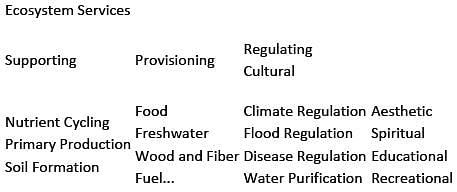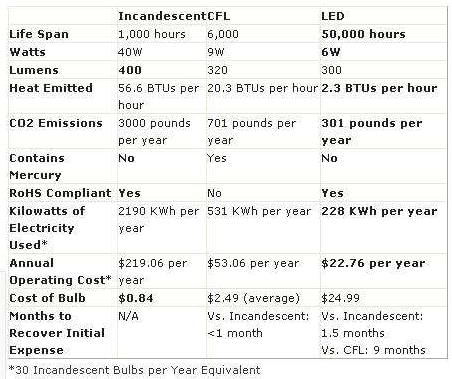UPSC Prelims Past Year Paper 2011: Paper 1 (GS) - UPSC MCQ
30 Questions MCQ Test - UPSC Prelims Past Year Paper 2011: Paper 1 (GS)
Biodiversity forms the basis for human existence in the following ways:
1. Soil formation.
2. Prevention of soil erosion.
3. Recycling of waste.
4. Pollination of crops.
Q. Select the correct answer using the codes given below:
1. Soil formation.
2. Prevention of soil erosion.
3. Recycling of waste.
4. Pollination of crops.
Q. Select the correct answer using the codes given below:
Aspartame is an artificial sweetener sold in the market. It consists of amino acids and provides calories like other amino acids. Yet, it is used as a low-calorie sweetening agent in food items. What is the basis of this use?
| 1 Crore+ students have signed up on EduRev. Have you? Download the App |
What was the purpose with which sir William wedderburn and W.S.Caine had set up the Indian parliamentary committee in 1893?
What is the difference between a CFL and an LED lamp?
a) To produce light, a CFL uses mercury vapour and phosphor while an LED lamp uses semiconductor material.
b) The average life span of a CFL is much longer than that of an LED lamp.
c) A CFL is less energy-efficient as compared to an LED lamp.
Q. Which of the statements given above is/are correct?
Recently, “oil zapper’’ was in the news. What is it?
A married couple adopted a male child. A few years later, twin boys were born to them. The blood group of the couple is AB positive and O negative. The blood group of the three sons is A positive, B positive, and O positive. The blood group of the adopted son is?
Mahatma Gandhi said that some of his deepest convictions were reflected in a book titled, “unto this last’’ and the book transformed his life. What was the message from the book that transformed Mahatma Gandhi?
With reference to Indian freedom struggle, Usha Mehta is well-known for?
A new optical disc format known as the bluray disc (BD) is becoming popular. In what way is it different from the traditional DVD?
1. DVD supports standard definition video while BD supports high definition video.
2. Compared to a DVD, the BD format has several times more storage capacity.
3. Thickness of BD is 2.4 mm while that of DVD is 1.2 mm.
Q. Which of the statements given above is/are correct?
With reference to the period of Indian freedom struggle, which of the following was/were recommended by the Nehru report?
1. Complete independence for India.
2. Joint electorates for reservation of seats for minorities.
3. Provision of fundamental rights for the people of India in the constitution.
Q. Select the correct answer using the codes given below:
Among the following states, which one has the most suitable climatic conditions for the cultivation of a large variety of orchids with minimum cost of production, and can develop an export oriented industry in this field?
Which one of the following is not a site for insitu method of conservation of flora?
Consider the following statements: In India, a metropolitan planning committee:
1. Is constituted under the provisions of the constitution of India.
2. Prepares the draft development plans for metropolitan area.
3. Has the sole responsibility for implementing government sponsored schemes in the metropolitan area? Q. Which of the statements given above is/are correct?
What is the difference between “vote-onaccount” and interim budget?
1. The provision of a “vote-on-account’’ is used by a regular government, while an “interim budget’’ is a provision used by a caretaker government.
2. A “vote-on-account’’ only deals with the expenditure in government are budget, while an “interim budget’’ includes both expenditure and receipts.
Q. Which of the statements given above is/are correct?
Regarding the international monetary fund, which one of the following statements is correct?
In the union budget 2011-12, a full exemption from the basic customs duty was extended to the bio-based asphalt (bioasphalt). What is the importance of this material?
1. Unlike traditional asphalt, bio-asphalt is not based on fossil fuels.
2. Bioasphalt can be made from non-renewable resources.
3. Bioasphalt can be made from organic waste materials.
4. It is eco-friendly to use bioasphalt for surfacing of the roads.
Q. Which the correct answer using the codes given below?
Consider the following:
1. Carbon dioxide.
2. Oxides of nitrogen.
3. Oxides of Sulphur.
Q. Which of the above is/are the emission/emissions from coal combustion at thermal power plants?
Satellites used for telecommunication relay are kept in a geostationary orbit. A satellite is said to be in such as orbit when:
1. The orbit is geosynchronous.
2. The orbit is circular.
3. The orbit lies in the plane of the earth’s equator.
4. The orbit is at an altitude of 22,236 Km.
Q. Which the correct answer using the codes given below:
India has experienced persistent and high food inflation in the recent past. What could be the reasons?
1. Due to a gradual switchover to the cultivation of commercial crops, the area under the cultivation of food grains has steadily decreased in the last five years by about 30%.
2. As a consequence of increasing incomes, the consumption patterns of the people have undergone a significant change.
3. The food supply chain has structural constraints.
Q. Which of the statements given above are correct?
At present, scientists can determine the arrangement or relative positions of genes or DNA sequences on a chromosome. How does this knowledge benefit us?
1. It is possible to know the pedigree of livestock.
2. It is possible to understand the causes of all human diseases.
3. It is possible to develop disease-resistant animal breeds.
Q. Which of the statements give above is/are correct?
In terms of economy, the visit by foreign nationals to witness the XIX common wealth games in India amounted to?
Microbial fuel cells are considered a source of sustainable energy. Why?
1. They use living organisms as catalysts to generate electricity from certain substrates.
2. They use a variety of inorganic materials as substrates.
3. They can be installed in waste water treatment plants to cleanse water and produce electricity.
Q. Which of the following statements given above is/ are correct?
Which one of the following statements appropriately describes the “fiscal stimulus”?
The formation of ozone hole in the Antarctic region has been a cause of concern. What could be the reason for the formation of this hole?
Consider the following actions which the government can take:
1. Devaluing the domestic currency.
2. Reduction in the export subsidy.
3. Adopting suitable policies which attract greater FDI and more funds from FIIs.
Q. Which of the above action/actions can help in reducing the current account deficit?
The constitution (seventy-third amendments) act, 1992, which aims at promoting the panchayati raj institutions in the country, provides for which of the following?
1. Constitution of district planning committees.
2. State election commissions to conduct all panchayat elections.
3. Establishment of state finance commission.
Q. State the correct answer using the codes given below:
Two important rivers- one with its source in Jharkhand (and known by a different name in Odisha), and another, with its source in Odishamerge at a place only a short distance from thecoast of bay of Bengal before flowing into the sea. This is an important site of wildlife and biodiversity and a protected area.
Which one of the following could be this?
A rapid increase in the rate of inflation is sometimes attributed to the “base effect”. What is “base effect”?
India is regarded as a country with “Demographic Dividend’’. This is due to?
Regarding “carbon credits’’, which one of the following statements is not correct?



















